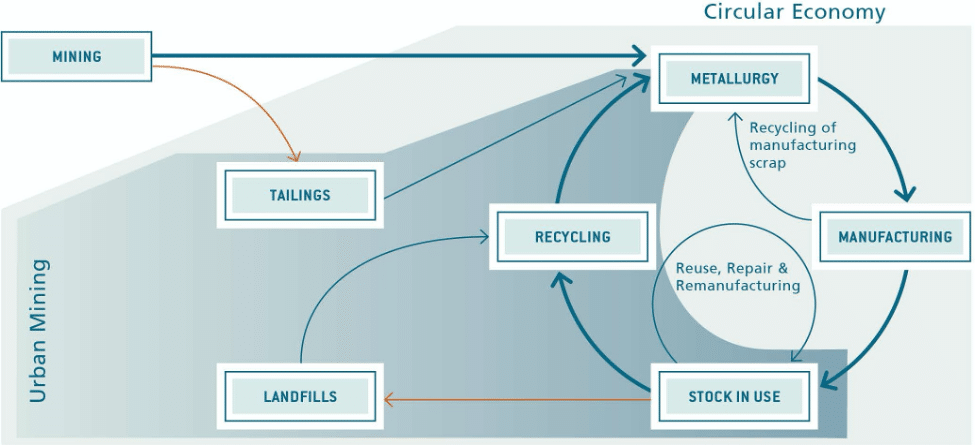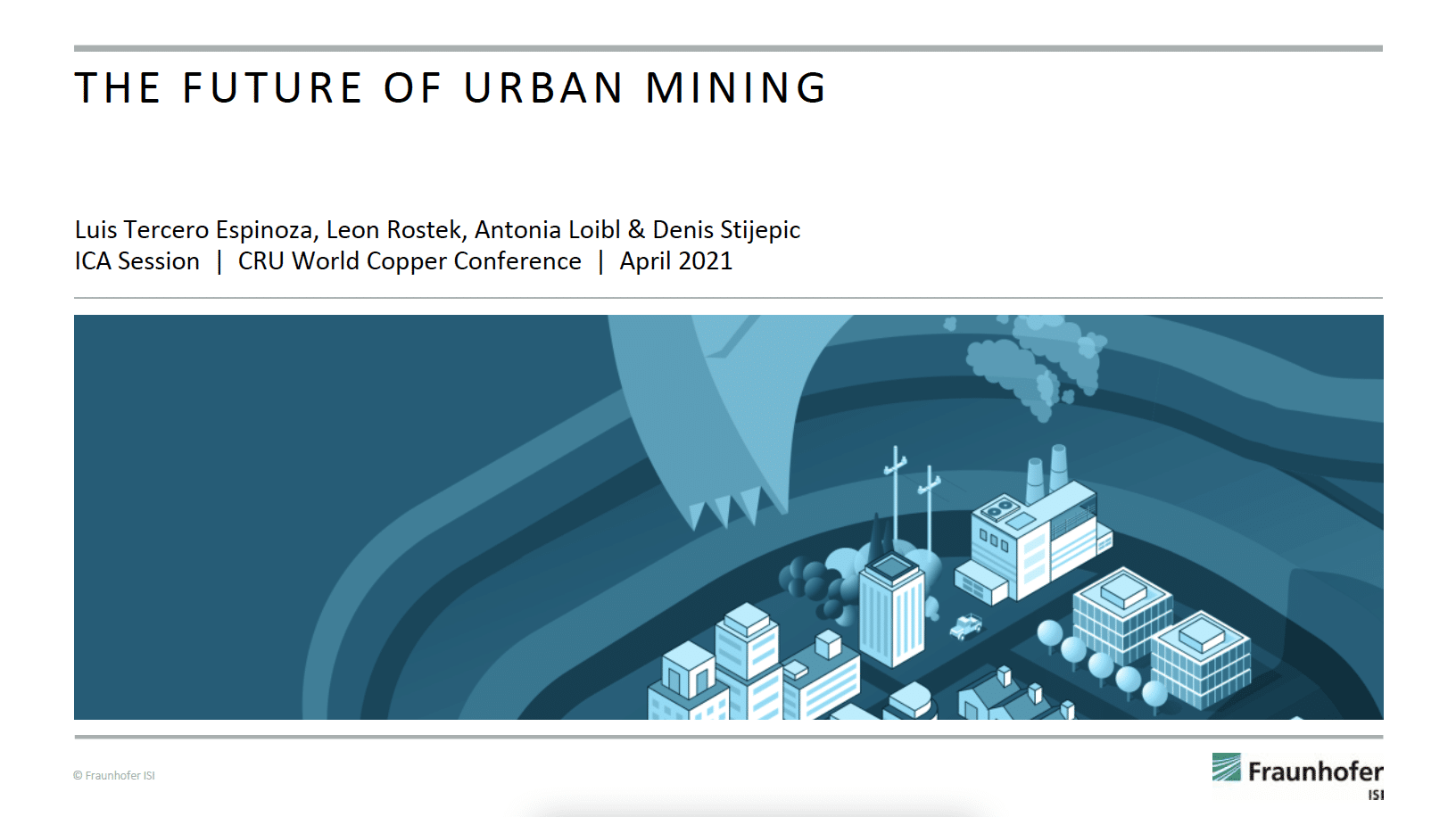Urban Mining is a concept that emphasizes the potential of cities, the human habitat and built environment as a source of raw materials. New research, commissioned by the International Copper Association (ICA) and conducted by Fraunhofer ISI, looks at its definition, the benefits it brings in strengthening the circular economy and raw materials value chain, existing obstacles, and ways to scale the practice up around the globe.
What is Urban Mining?
Urban Mining is a concept that emphasizes the potential of cities, the human habitat and built environment as a source of raw materials. Modern society turns raw materials into products at a massive scale, from buildings and electronic goods to waste and mine tailings – the so-called “anthropogenic stock”. This stock can be seen as a source of raw resources, and Urban Mining aspires to recover it.

The Urban Mine is therefore a counterpoint to the geological raw materials extracted from conventional mine: while conventional mining secures raw materials by exploring for, extracting and refining natural resources, Urban Mining secures raw materials by exploring for, extracting and refining anthropogenic resources.

Benefits of Urban Mining
Urban Mining is an important element of the circular economy, as it allows the collection of discarded products and the return of secondary raw materials to the economy. By treating waste as a resource, Urban Mining is crucial, alongside conventional mining, to meeting the increasing demand for raw materials.

Urban Mining can also bring geographically-scarce resources closer to where they’re needed, shortening transport distances and supply chains in the process. Moreover, many modern technologies such as smartphones or electric vehicles rely on metals with vulnerable supply chains, including rare earth metals from China to cobalt from the Democratic Republic of Congo. Urban Mining can improve resource security by providing a largely independent source of raw materials that is not immediately impacted by disruptions to the primary supply.
As the amount of products and infrastructure continues to increase, the amount of resources contained in the Urban Mine keeps growing over time. This is true for both materials embodied in products currently in use (the “stock-in-use”) and for material contained in landfills. For now, recovery from landfills is however underexploited due to high costs, challenging regulatory environments and concerns surrounding remediation and toxic materials.
Challenges and Trade-offs
To fully utilize the potential of the Urban Mine, a combination of adequate local infrastructure, skills and market conditions is a must. Currently, the capacity for processing secondary materials varies widely around the world; some countries lack the infrastructural capacity to process certain materials. For example, the United States has no secondary copper smelters, and therefore no ability to recover copper from the Urban Mine, while China has a near monopoly on neodymium recycling from magnets.
Many recycling processes have considerably lower carbon footprints compared to mining. Yet, in the case of some metals, increasing their recovery, especially from highly complex products, might result in substantial costs due to technical challenges, lower economic viability, and a higher environmental burden of the necessary processes.
Because the recovery of resources from landfills is currently negligible, the general conditions for Urban Mining are essentially equal to the conditions for recycling. Recycling in the EU however suffers from a combination of high labor costs and labor-intensive dismantling of complex products. As a result, many end-of-life products are shredded, though manual disassembly would yield higher material recovery. US recycling policy is much more indirect than in the EU, and would benefit from increased secondary material processing capacity. China, on the other hand, has substantial recycling capacity, but also very high resource demand, which leads to scrap scarcity.
How to scale up Urban Mining?
The recovery of raw materials from the Urban Mine can be increased and supported by clear and strict regulations, particularly by those which incentivize recycling over landfilling. The uniformity of environmental regulation across borders is crucial, as product and material flows between countries are complicated by differing approaches to product design, labeling and standards. In a world of strict and uniform regulation, secondary material could be directed to where the most value is conserved instead of where environmental and worker health costs are lower or are simply out of sight.
Public authorities are also responsible for providing adequate infrastructure for recycling. The success of collection schemes is however fully dependent on the support of a committed and well-informed public.
Industry, meanwhile, has an important role to play both as designer and provider of products as well as collector and recycler. Product manufacturers must recognize the need to consider repair and disassembly as much as possible as part of the design process. Utilizing eco-design along with improving access to more detailed product information would not only encourage more widespread repair & refurbishing through easier identification of replacement parts, but would also contribute to allocating end-of-life products to the proper recycling routes, allowing for the maximal recovery of resources from the global Urban Mine.
Finally, in a world of ever more complex products distributed all over the globe, enabling conditions and incentives for the development of advanced recycling technologies and adequate access to these is a pre-requisite for effective recovery of the resource potentials of the Urban Mine.

